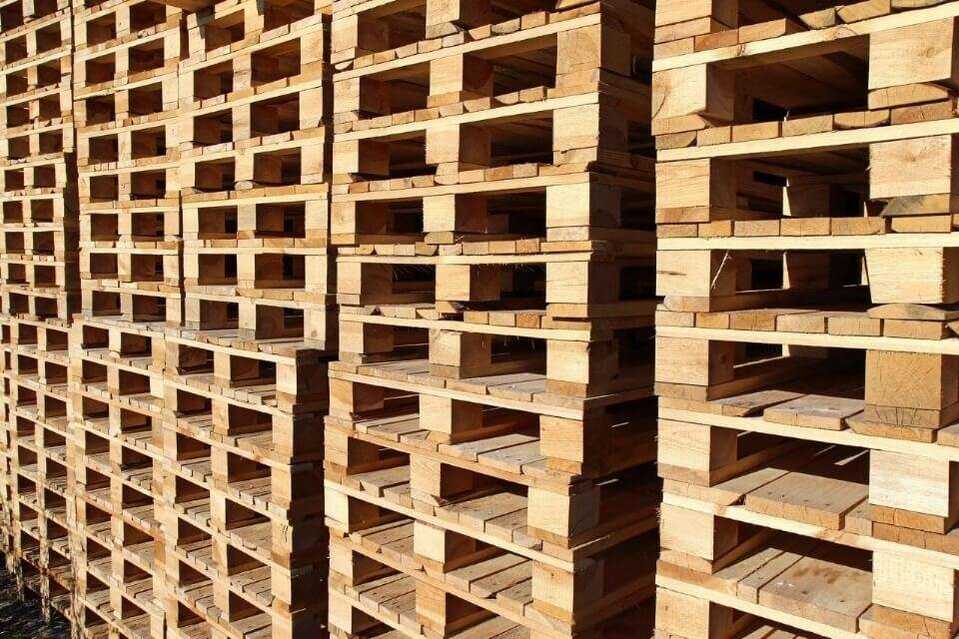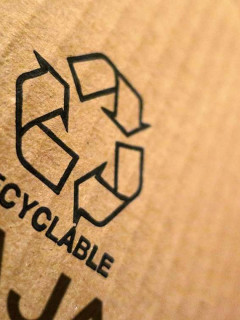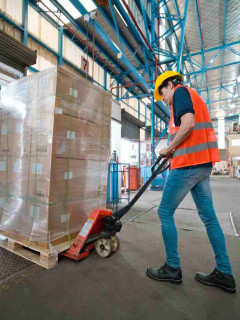The pallet is undoubtedly a key element of a warehouse, helping to store and transport goods in the best possible way. How do you choose from the wide range of pallets on the market?This short guide will show you all the key criteria to consider when choosing your pallets, as well as some additional elements that might be useful.
- A first definition of “pallet”, to find your way around
- What pallet sizes are there, and which ones to choose?
- Are there different loads for pallets?
- What different types of pallets exist?
- What other elements may be necessary to make your choice?
a first definition of “pallet”, to help you find your way around
It is interesting to start by defining “pallet”. It is a logistical accessory, which is used to support goods, generally in large quantities or in large formats, and can also be used for selling by the pallet. The logistical pallet is also known as a “handling pallet”. Its interest is to standardise and rationalise storage and transport. In fact, as most pallets are of the same size, they make it possible to
- Navigatea large stock by counting the number of goods on each pallet;
- Transporting them easily with machine tools such as pallet trucks or forklifts.
pallets are often differentiated by the number of inlets they contain. This means that they have several spaces dedicated to the passage of handling forks. There is thus a distinction between  two-way pallets, which only allow the handling forks to pass through on two opposite sides of the pallet
two-way pallets, which only allow the handling forks to pass through on two opposite sides of the pallet Four-way pallets, which allow the handling forks to pass through on all four sides of the pallet However, other selection criteria are necessary to make the right choice of pallets for your logistics strategy.
Four-way pallets, which allow the handling forks to pass through on all four sides of the pallet However, other selection criteria are necessary to make the right choice of pallets for your logistics strategy.
Which pallet sizes are available and which ones should be chosen
? It is important to know that French law does not specify any standard dimensions for logistics pallets. However, as pallets have become more and more popular, their dimensions have become standardised. Three types of handling pallets are commonly found in warehouses
- The EPAL pallet (or EURO pallet): Marked with the “EUR” or “EPAL” logo, it has been designed to reduce industrial packaging waste as much as possible. In its standard dimensions it measures 1200 x 800 x 145 mm.
- The half pallet: As the name suggests, it is half the length of the EPAL pallet, i.e. 600 x 800 mm. It is often multi-rotating, which makes it interesting for the food industry and the retail trade.
- The quarter-pallet is easily nestable and measures 600 x 400 mm.
rAJA tip: Please note that you may come across so-called “American” or “ISO” pallets in your search. They measure 1200 x 1000 mm, and are mainly used in the USA, Canada and Japan. Beware, however, that they are not suitable for European trucks. cta id=’4a8d96a4-6068-42d9-ac84-e73071eccd05′]
Are there different loads for pallets?
When choosing your pallets, you need to pay attention to the loads that they can carry. So learn to differentiate between  the static load of the pallets, i.e. the maximum load they can support when they are immobilised on the ground
the static load of the pallets, i.e. the maximum load they can support when they are immobilised on the ground the dynamic load, i.e. the maximum load that a pallet can bear when being transported or moved
the dynamic load, i.e. the maximum load that a pallet can bear when being transported or moved rack load, i.e. the maximum load it can support when its long sides are resting on a rack Make a good typology of the weights of your products before considering the loads of your pallets.
rack load, i.e. the maximum load it can support when its long sides are resting on a rack Make a good typology of the weights of your products before considering the loads of your pallets.
What different types of pallets exist?
Format and load: these are two key criteria for choosing your pallets. The last determining criterion is the material used to design the pallet. Some will have the advantage of being lighter, others will be more environmentally friendly… It is up to you to choose, according to your logistical and transport strategy, from these 4 main types of pallets Wooden palletspallets are those that are traditionally well known. They are
Wooden palletspallets are those that are traditionally well known. They are
- Sturdy
- Rackable and stackable
- Suitable for export
- Recyclable and repackable
however, the wood they are made of can be dangerous during handling Cardboard palletsare generally less used, but they are still interesting because
Cardboard palletsare generally less used, but they are still interesting because
- Very light
- Stackable
- Suitable for export
- Economical and recyclable
they ensure safe handling for your operators and transporters Plastic palletsthey are an interesting choice for products stored under rather specific conditions, as they are
Plastic palletsthey are an interesting choice for products stored under rather specific conditions, as they are
- Waterproof and insensitive to temperature variations
- Stackable and collapsible (depending on the model chosen)
- Suitable for export
- Hygienic and washable
they also ensure safe handling Moulded palletsare becoming increasingly popular, as they are the most environmentally friendly pallets. They are
Moulded palletsare becoming increasingly popular, as they are the most environmentally friendly pallets. They are
- Economical
- 80% recycled and recyclable
- Lightweight
- Nestable
- Suitable for export
- Resistant to temperature variations
their handling is safe for your order pickers and carriers.
What else might you need to consider when making your choice?
Strategically, it is important to look at what else might help you to palletise your products easily and safely. So don’t hesitate to look at
- Corner protectorsthese are small elements that protect the corners of your pallets, packages and products from bumps and scratches during transport, stacking and storage, and prevent damage caused by high clamping force of the straps.
- Pallet coversit protects the top of the pallet from the weather and dust once it has been filmed.
- Stretch filmit is necessary to protect palletised goods, both during storage and during transport.
Now you are ready to make the best choice of pallets for your logistics strategy. Which ones are suitable for your products, your operators and carriers, and your CSR policy? It’s up to you to make the right choice for standardised and efficient logistics.















